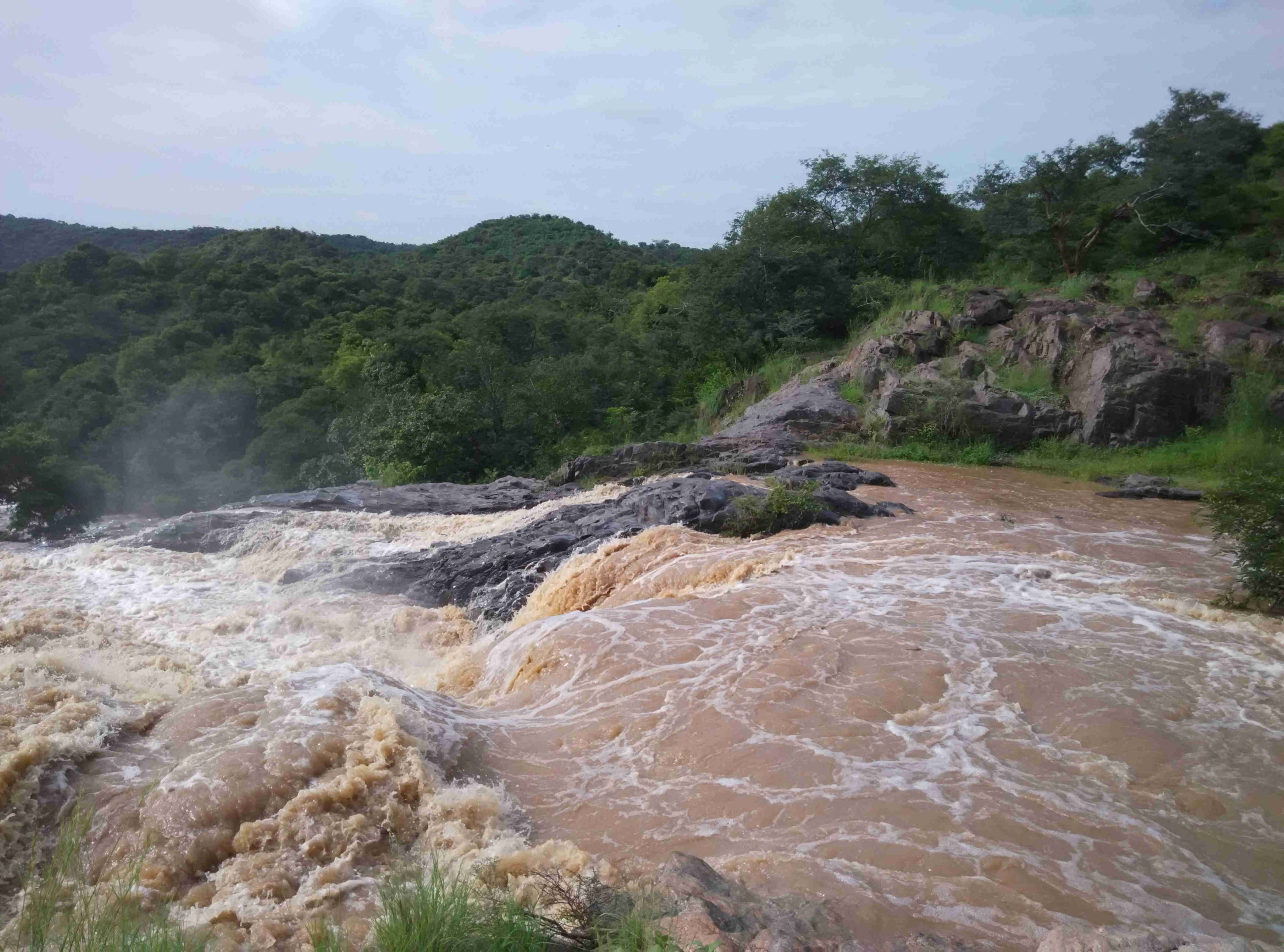KAIGAL EDUCATION AND ENVIRONMENT PROGRAM
KRISHNAMURTI FOUNDATION INDIA
KAIGAL, THOTTAKANAM POST, CHITTOOR DISTRICT, A.P

REPORT FOR THE YEAR JUNE 2017 – MAY 2018
Table of Contents
2 Functioning of the Sanctuary Schools
2.1.1 School program activities
3 Environment Education Programs
4 Building Institutional Linkages
Introduction
As another eventful year came to an end, we look back with satisfaction at what we have done so far and with renewed energy for the coming year. The year saw the education and conservation programs continue to grow and the livelihood program on its way to becoming more self-reliant. The highlight was the Kaigal river in spate and the waters at their highest in the last ten years in Kaigal, painting the area lush green. This is a brief report on the operations of the Kaigal Education and Environment Program for the academic year June 2017 – May 2018.
Functioning of the Sanctuary Schools
The two schools – in the tribal villages of Mugilupodalarevu and Kalligutta – have completed their 14th year of operation in May 2018; and have had their registrations renewed for a further period of 5 years with the Andhra Pradesh Department of School Education. Both the schools are registered under the Right to Education Act (2009)[1] and are staffed by qualified teachers. All the teachers have finished their graduation followed by a B.Ed degree. They either belong to the community or are from the neighbourhood.
Over the years the schools have grown in their operations in Kalligutta and Mugilupodarevu. All children above 3 years of age in these villages come to schools. At the end of Class 5 (the level upto which we are registered) many of them continue their studies by joining a Government High School – day school or residential. Some older children in the villages – who had not continued their education with government schools or had dropped out – enrol with the National Institute of Open Schooling to finish their Class 10 and 12. These students are mentored by the teachers to complete the exam. A few students also continue their studies after class 10 and 12 pursuing vocational education, teaching diplomas or college degrees.
During this last year we continued the focus on strengthening the academic program as well as combining community outreach and conservation activities with the core school curriculum.
School program activities
The primary objective of the Sanctuary Schools is to provide a meaningful and relevant educational experience for the children from the communities, without removing them from their context. The students learn in mixed age groups and lessons are planned by the teachers according to the levels of the children. The curriculum comprises learning about the environment, an experiential approach to science learning, mathematics and Telugu at grade appropriate levels, arts crafts and music. The teachers who are from the neighboring communities are empathetic towards the children and we believe this is the most important characteristic essential for the effectiveness of the school in these contexts. Curricular improvements and teacher development programs have worked around and to reinforce this core characteristic of the school. Several project based and community centred activities were taken up to supplement the regular instruction in schools.
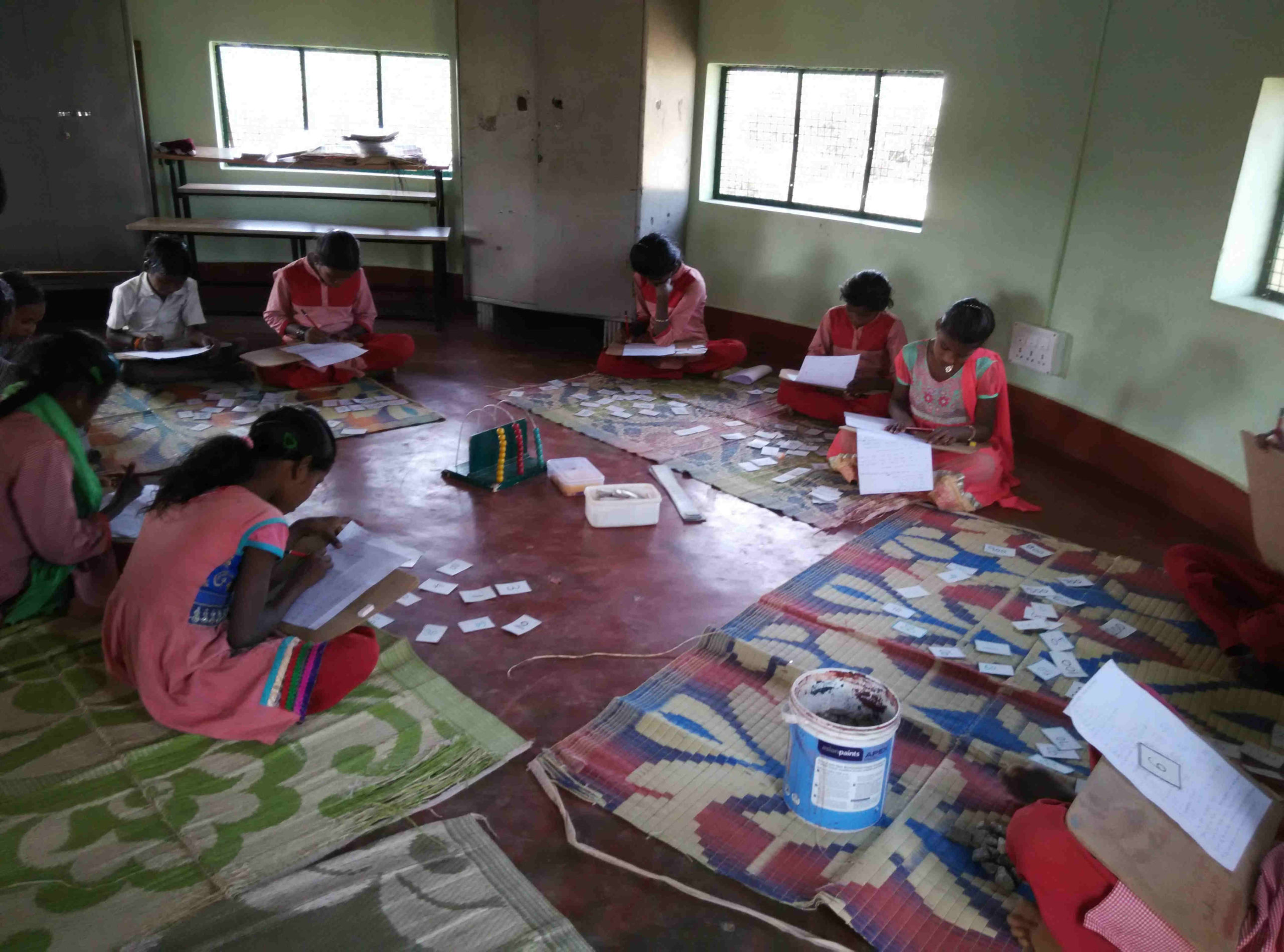
Student reviews
Some of the key activities taken up are described below.
- Teacher development programs were conducted focusing on the teachers’ abilities to deliver lessons using activity based methods. Teachers did demonstration sessions practising lessons and making materials. Teachers also participated in a self-evaluation test for evaluating their own development needs for content learning.
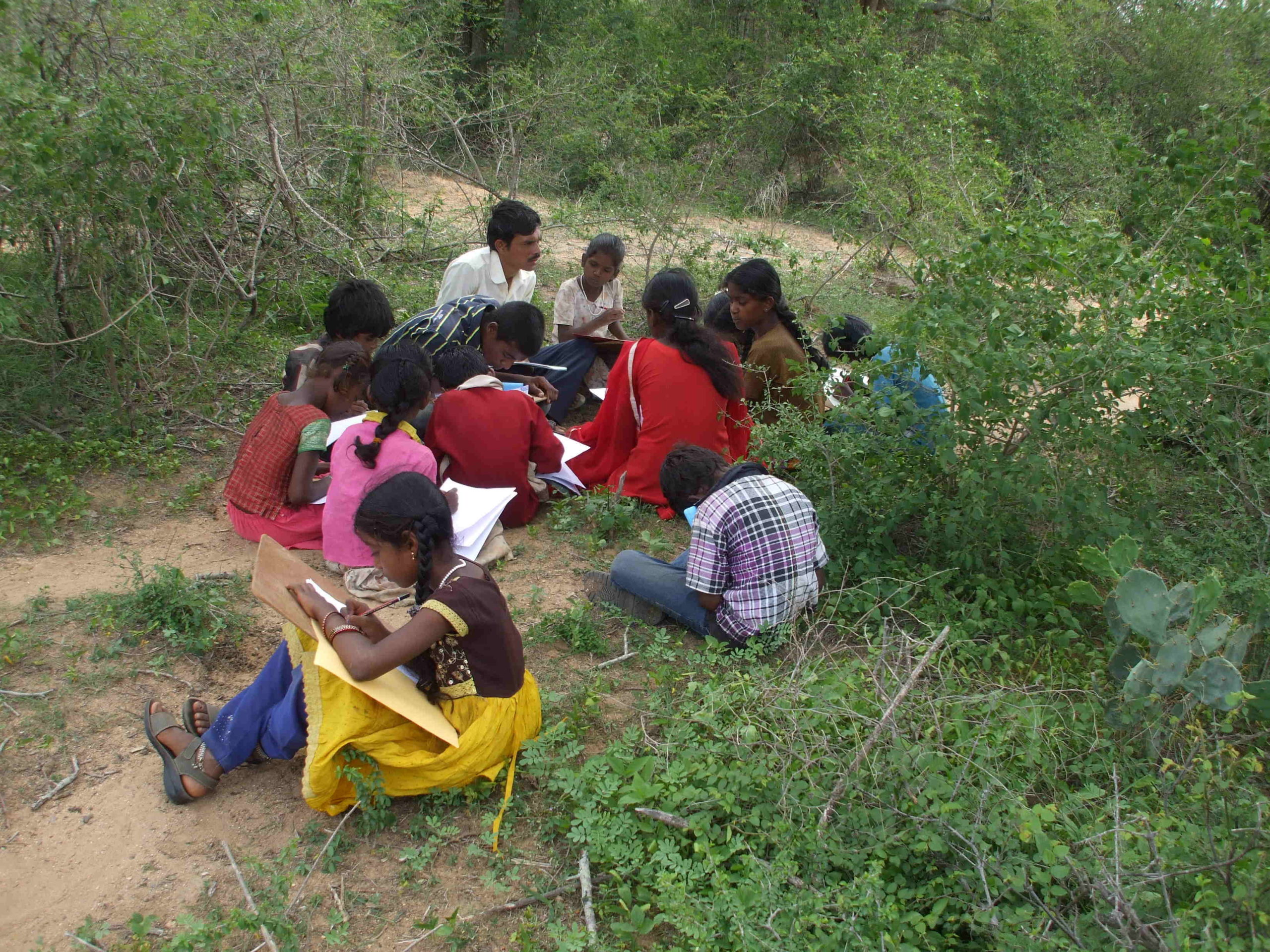
Students sketching the local biodiversity
- Regular student reviews were conducted to assess the level of the children and plans were made accordingly for the students for language and math instruction.
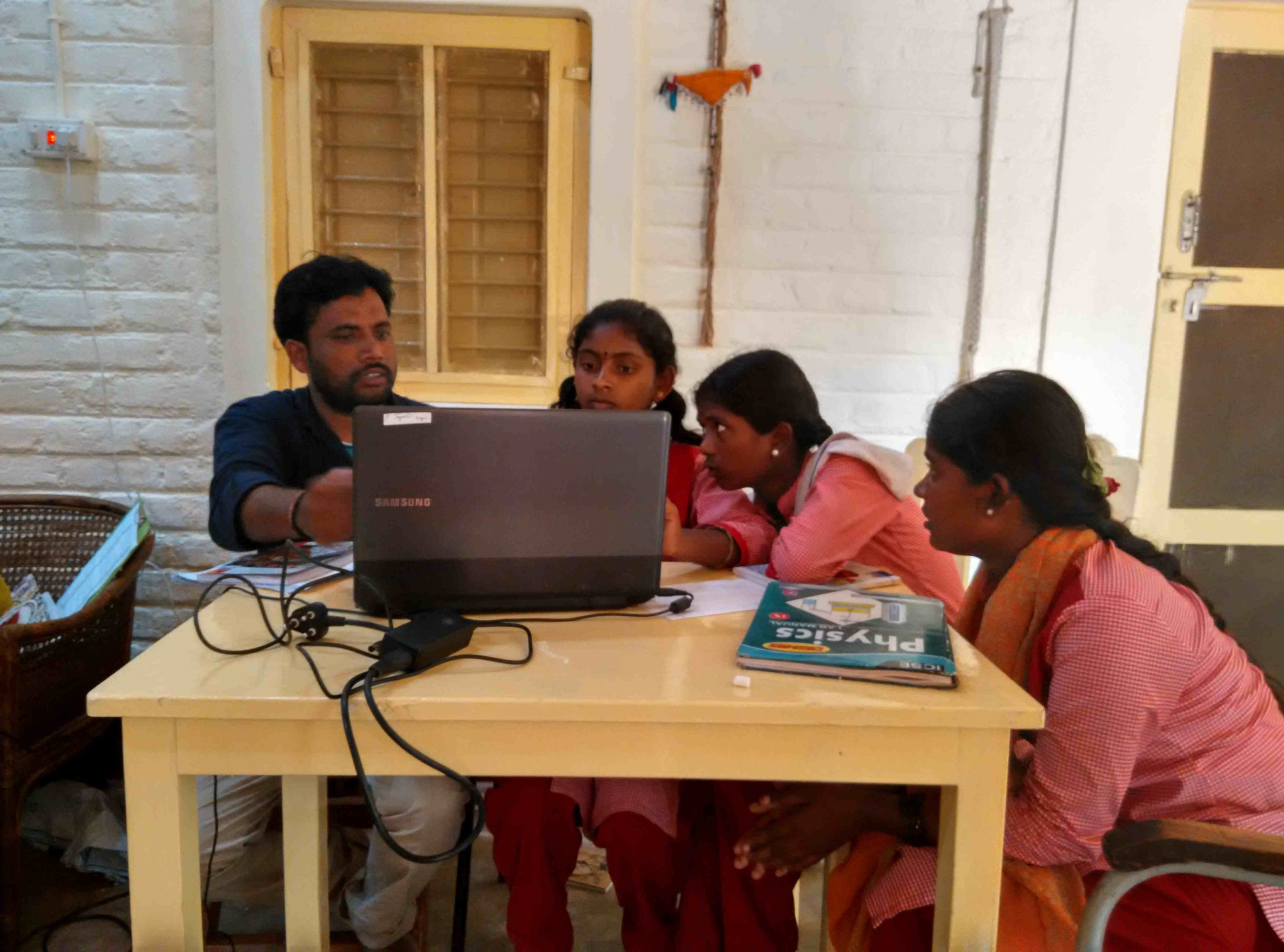
NIOS students being introduced to the digital world
- The students undertook different projects for understanding the environment around them. These included survey of medicinal plants, documentation of forest biodiversity and the the local bird diversity. They undertook field visits, observed and collected data and made presentation posters for sharing with other students and parents. In addition to this, students were also introduced to science through toys – when they made and demonstrated the working of many toys.
- Teachers and senior students were introduced to using computers for their own learning needs, communicating with others as well as for creating resources for themselves as well as sharing with students. All the teachers and the senior students (those who have worked with us for the NIOS exams) can now comfortably work with several digital applications like text editing, making digital concept maps, accessing the internet for their information requirements and are able to communicate over email. They have been introduced to creating resources in Telugu and English.
Working with The Val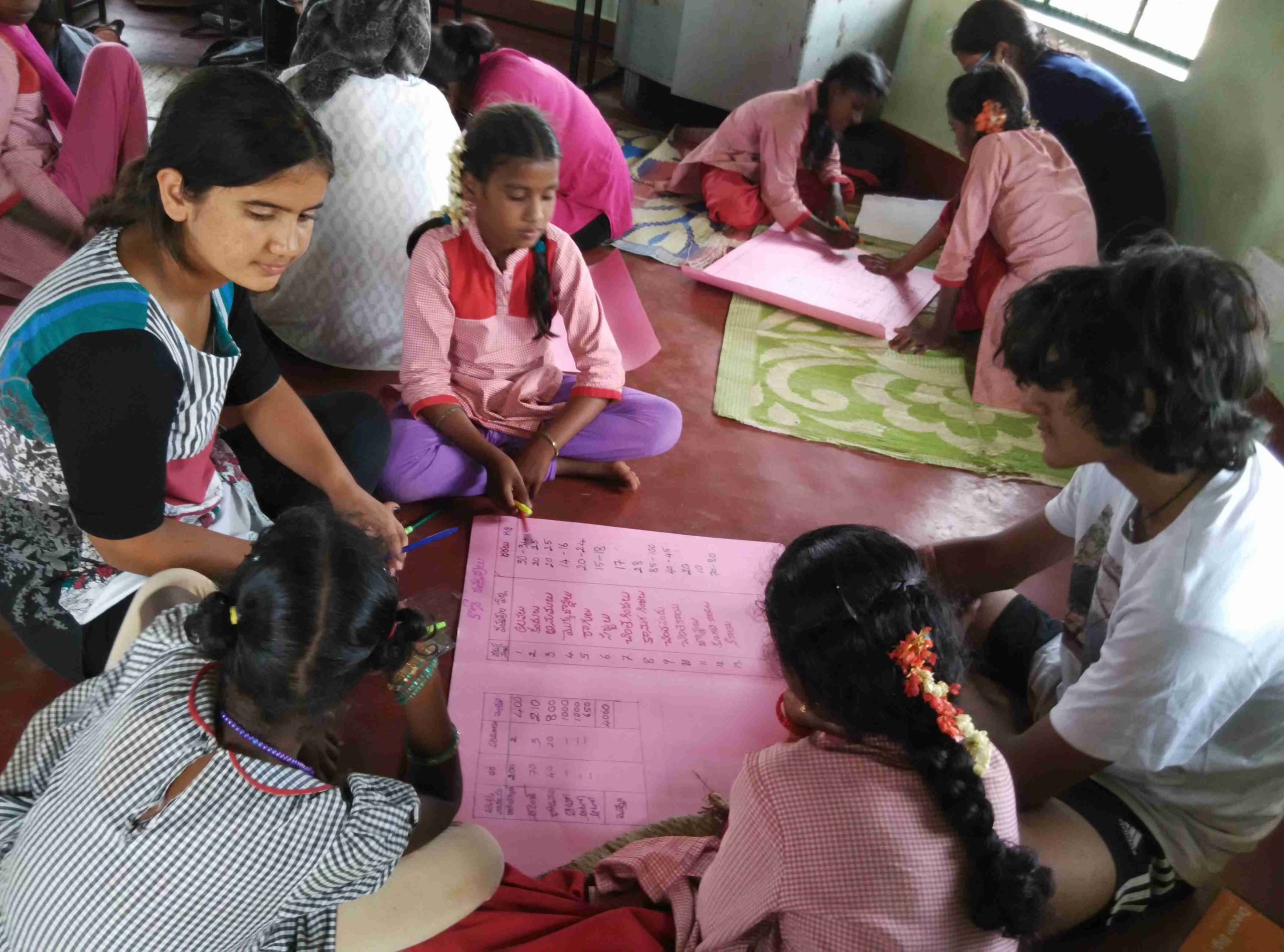
ley school students to document market visit
- During the school year the students[2] also undertook community intervention projects. One of these was a community sensitization and awareness program about waste management in the villages around the schools. A project based approach was taken up to introduce students to arithmetic through interaction with the market. Students analyzed the expenditure of their households and of the school. Visits to the wholesale and retail markets introduced them to the idea of margins, profits and they also saw the relationship of their community with the market.
- Students undertook a digital documentation of the health and sanitary condition around the villages and nearby areas. They took photographs, interviewed villagers and captured people’s understanding of health and hygiene.
- Many of the projects as well as their regular work during school was shared in community meetings and open houses with parents. The community meetings have been well attended and parents have been showing continuing interest in the education of their children.
- Four students have completed their Class 10 exams and are continuing their education. One of them has joined a nursing program in a nearby town, and two of them have been selected to join a vocational education program. One of the students is working as an intern in the school while she plans to prepare for her Class 12 exam through NIOS. One student completed her Class 12 through NIOS and is working with the school as a teaching assistant and helping with the adult education programs of the school. She is planning to study towards a degree through distance education.
Environment Education Programs
The environment education program (EEP) began in the year 2007 with the objective of sharing with schools and students, the possibilities, challenges and strategies for a sustainable and ecologically responsible way of life. The objective of the EEP is to sensitize schools, students, teachers and other educational institutions to the environment that we all are a part of.
The program provides an opportunity for individuals to live close to nature in simple living conditions; to work hands-on for different activities, re-connect with the environment and is an attempt to understand our relationship with the natural world directly.
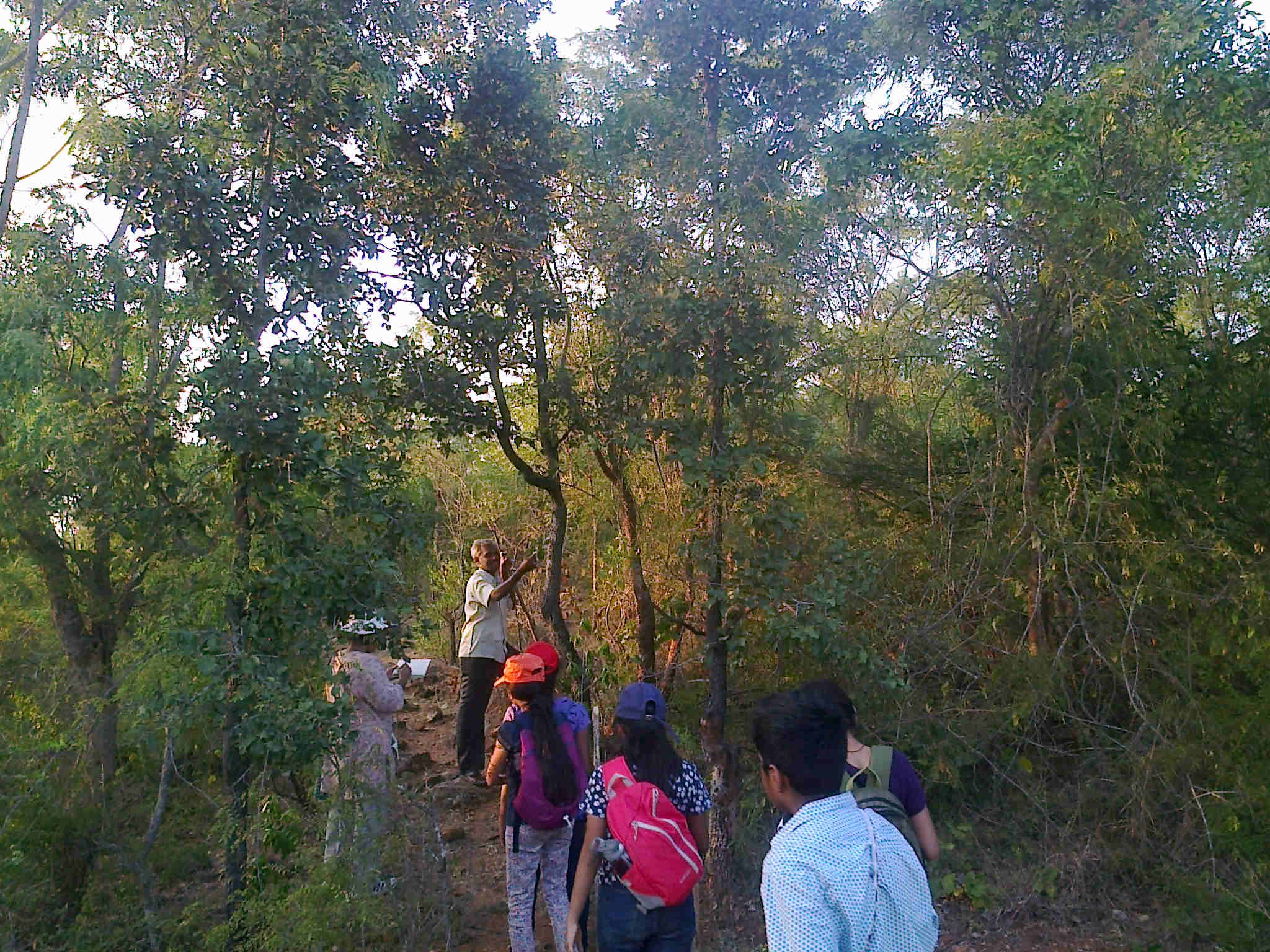
Forest walk during the EEP
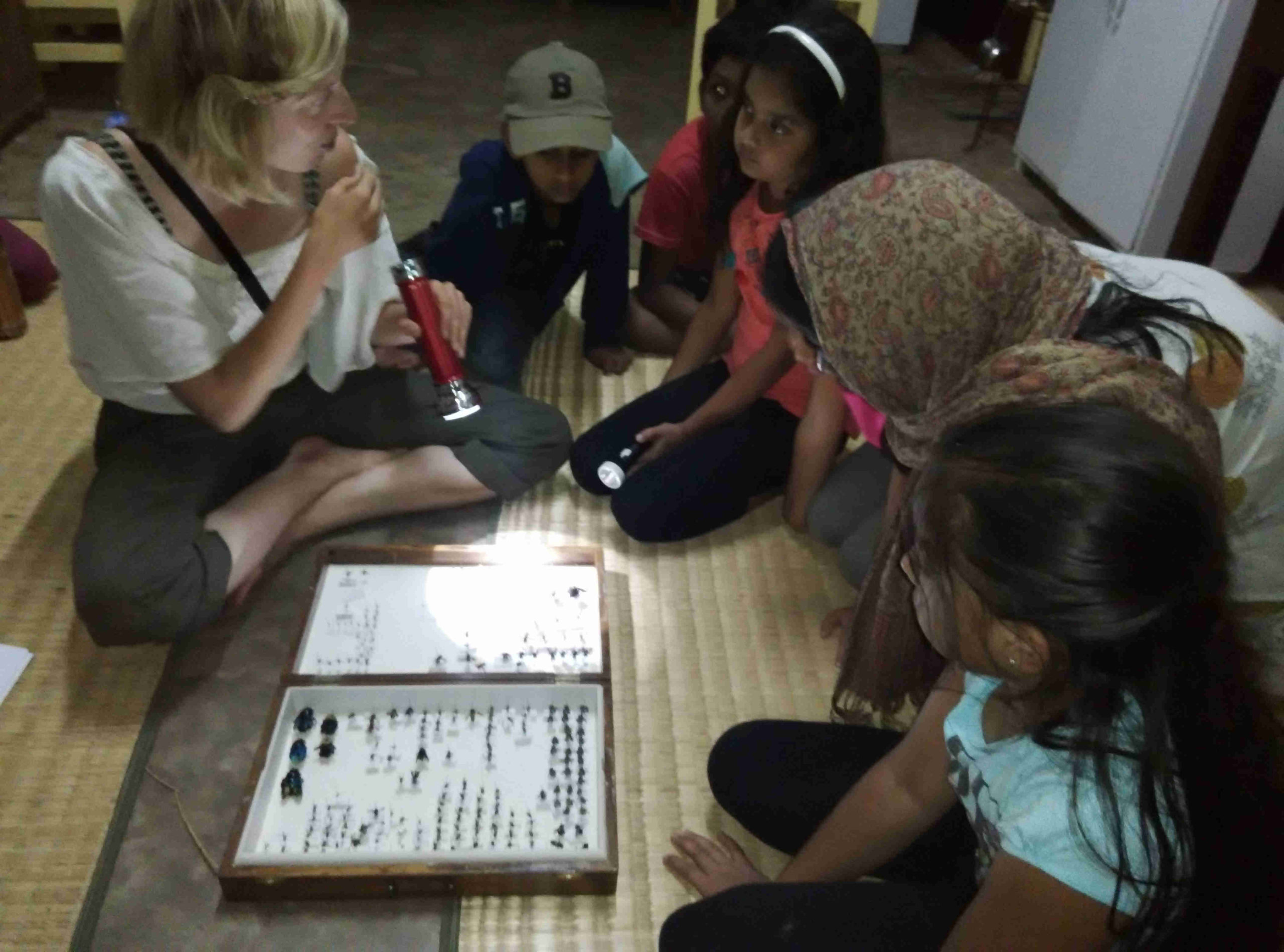
EEP students interacting with research students stationed at Kaigal
The activities and experiences offer young minds an opportunity to observe and appreciate the beauty and order that exists in the natural world and are designed to create sensitivity, respect and a sense of wonder toward all life forms.
With the plentiful rains this past year, we took up tree planting in the Kaigal land, Kothur Village along the rejuvenated lake, schools and village lands. Every student group took part in making clay seed bombs that were dispersed in different areas of the forest within and around the Kaigal land.
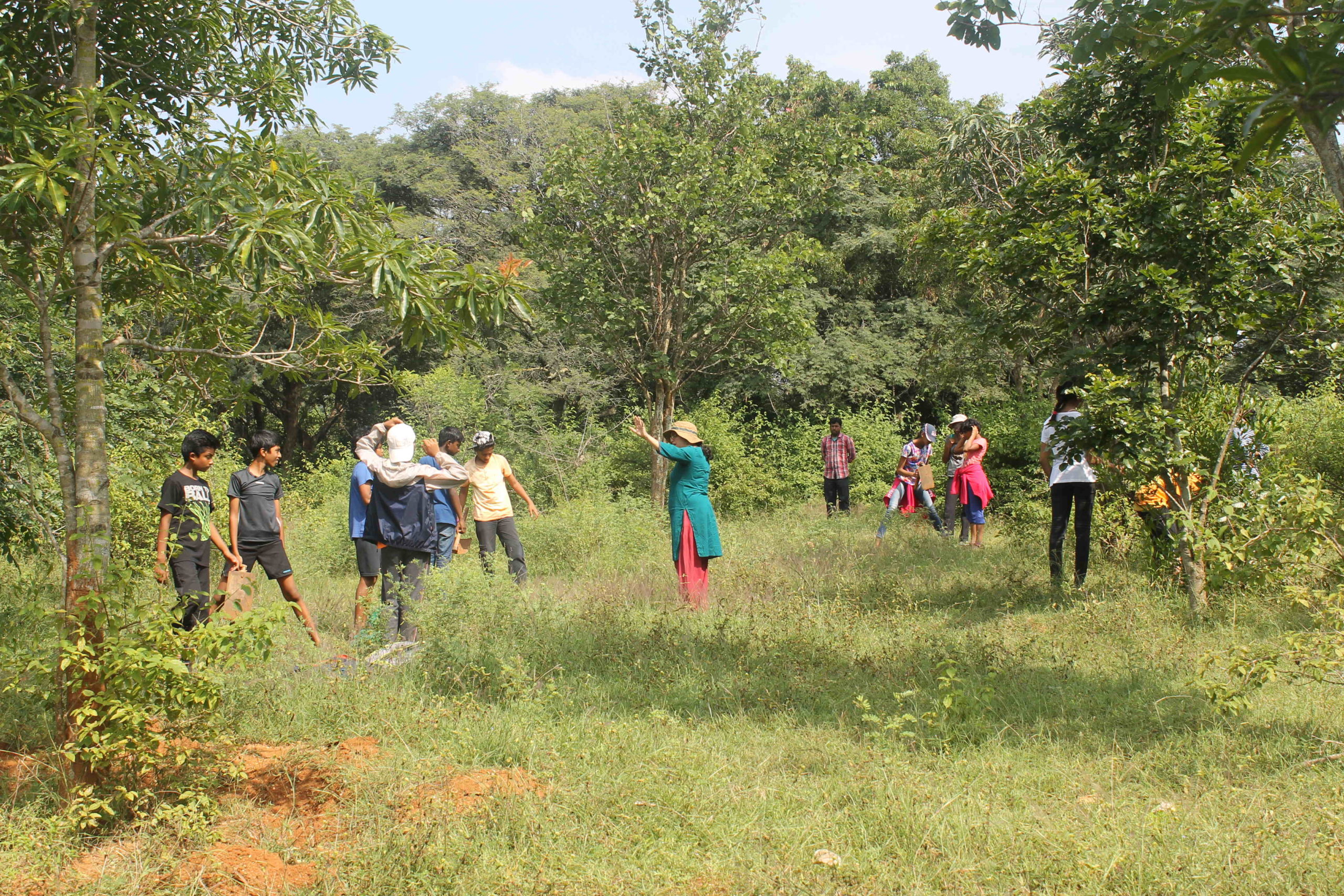
Afforestation in progress
Nine outstation schools participated in the program during 2017-18. We conducted 12 programs with about 18-25 students in each program. One new program that we conducted this year was on afforestation and nursery techniques for a school situated near the outskirts of Bengaluru. The program focused on introducing the students and teachers to methods of seed collection, treatment and nursery management.
Building Institutional Linkages
Building linkages and sharing learning across similar endeavours is something we recognize as important. We have consciously made efforts to build linkages across academia, government and non-government sectors. Some of our efforts in this direction are described below.
- Submitted a paper at the biennial conference of the Comparative Education Society of India held in November 2017 at the Jammu University. This paper discussed how an empathetic approach to education in marginalized contexts would work and was a case study of the Sanctuary Schools.
- Participated in a workshop on Collaborative Knowledge Building conducted by the Tata Institute of Social Sciences and shared about our experiences in bringing together communities and their knowledge for conservation and sustainable forest management practices.
- We initiated steps to secure an agreement for access benefit sharing with the Andhra Pradesh State Biodiversity Board for access and use of bio resources; agreement expected to be finalized shortly.
- Entered into an MOU with the Indian Institute of Science Education and Research for providing support for their research students for studying the biodiversity in the region.
Outcomes
- Autonomy for the schools to develop a contextual learning program, sensitive to the community needs, has helped to create an inclusive learning environment. In the sanctuary schools, there are no drop-outs and the students continue their learning paths; many of them go on to complete Class 10 and 12 and seek to study further.
- Enthused by the learning of the students, the community members have started on a learning program for themselves; this is a clear sign of the value perception about education for themselves as well as for their children. The trend of marrying girls early has almost stopped in these communities; with more mothers wanting their girls to complete their schooling and perhaps going on to college.
- The government education system is willing and open to integrating our ideas and curriculum for environmental education, science and English into the government primary and high schools in the area. During our participation in the Ecoschools program, we developed a hands-on environment education module that is adaptable to different age groups of students and across different schools.
- About 35 students from the 2 villages have completed their Class 10 exam either through the National Institute of Open schooling or government high schools; About 13 of them have gone on to study in colleges.
- The Environment Education program has demonstrated to the students and teachers a method of engaging with the environment with respect and conservation as the key stone; communities have directly benefited from the programmes taken by the students and teachers of the EEP.
- Starting out as a small enterprise, the livelihood program has now become an independent enterprise called the Kaigal Trust, empowering women and youth in the community to develop skills and livelihoods while at the same time demonstrating a model of sustainable harvesting of bio-resources.
Plans for the current year
- Development of community learning and resource centres in select villages around the area. These centres will focus on building functional literacy, numeracy, citizenship education as well as build skills for livelihood. It is the vision of these centres that they become spaces for continuous learning for the community where they learn to engage with and act on different issues around health, conservation, livelihoods and education.
- Building the environment education program to reach more institutions (educational and non-educational) so as to build a larger awareness around issues of conservation and education.
- Deepen our linkages with the research team with IISER and share the learnings from the research with the biodiversity management committees set up in the Panchayats
- Working with the educational administration and structures within the government to share some of the innovative approaches tried in the Sanctuary schools with government schools.
- Partnering with other organizations to bring our ideas and experiences of holistic education to more and more institutions within the government education system.
- Digital documentation of the community knowledge and practices so as to preserve them for future generations.
